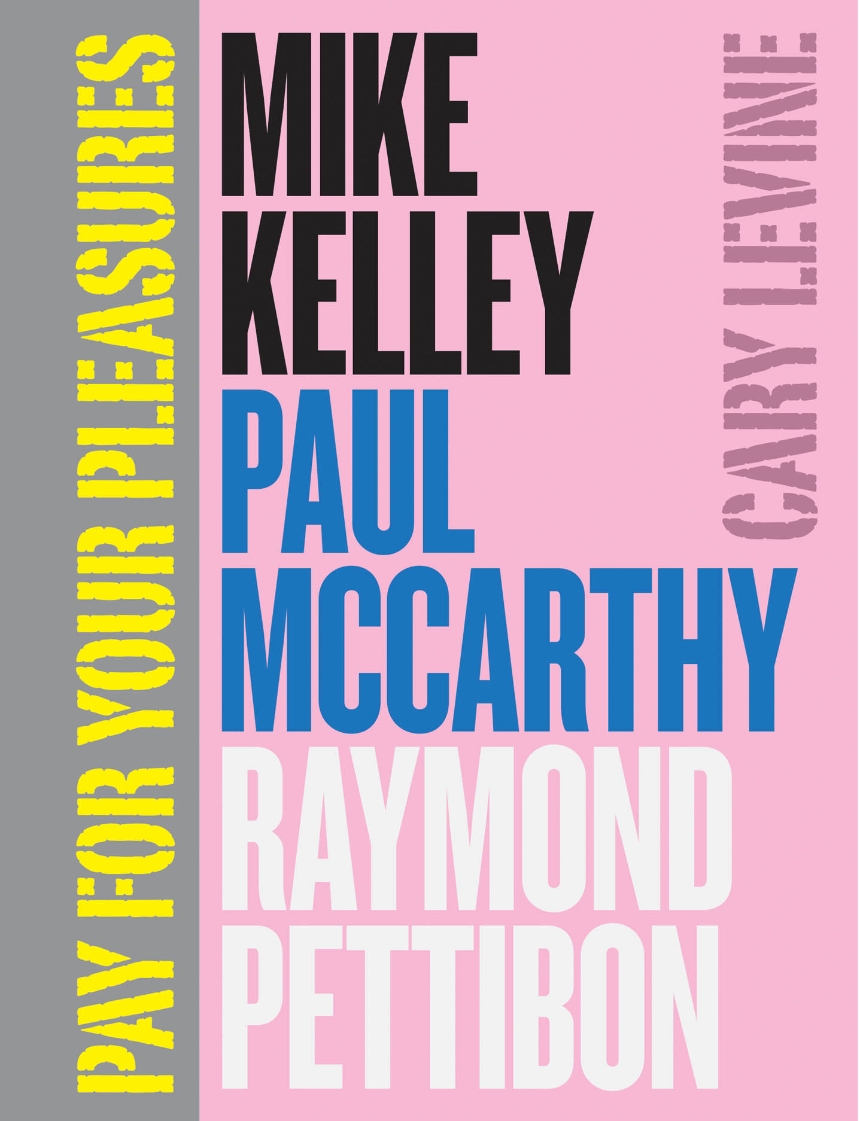Pay for Your Pleasures
Mike Kelley, Paul McCarthy, Raymond Pettibon
Mike Kelley, Paul McCarthy, and Raymond Pettibon—these Southern California artists formed a “bad boy” trifecta. Early purveyors of abject art, the trio produced work ranging from sculptures of feces to copulating stuffed animals, and gained notoriety from being perverse. Showing how their work rethinks transgressive art practices in the wake of the 1960s, Pay for Your Pleasures argues that their collaborations as well as their individual enterprises make them among the most compelling artists in the Los Angeles area in recent years.
Cary Levine focuses on Kelley’s, McCarthy’s, and Pettibon’s work from the 1970s through the 1990s, plotting the circuitous routes they took in their artistic development. Drawing on extensive interviews with each artist, he identifies the diverse forces that had a crucial bearing on their development—such as McCarthy’s experiences at the University of Utah, Kelley’s interest in the Detroit-based White Panther movement, Pettibon’s study of economics, and how all three participated in burgeoning subcultural music scenes. Levine discovers a common political strategy underlying their art that critiques both nostalgia for the 1960s counterculture and Reagan-era conservatism. He shows how this strategy led each artist to create strange and unseemly images that test the limits of not only art but also gender roles, sex, acceptable behavior, poor taste, and even the gag reflex that separates pleasure from disgust. As a result, their work places viewers in uncomfortable situations that challenge them to reassess their own values.
The first substantial analysis of Kelley, McCarthy, and Pettibon, Pay for Your Pleasures shines new light on three artists whose work continues to resonate in the world of art and politics.
224 pages | 24 color plates, 50 halftones | 8 1/2 x 11 | © 2013
Reviews
Table of Contents
List of Illustrations
Introduction: Pay for Your Pleasures
1. Paul McCarthy: Making Car Crashes
2. Mike Kelley: A History of Civilization
3. Raymond Pettibon: A Democracy of Split Personalities
4. Bending Gender
Meat Cakes: McCarthy’s Punch-Drunk Hunk and Half-Done-Up Drag Queens
Caught in the Zipper: Pettibon’s Belligerent Vixens and Feeble Heroes
Manly Crafts: Kelley’s (Oxy)moronic Needle and Wood Work
Caught in the Zipper: Pettibon’s Belligerent Vixens and Feeble Heroes
Manly Crafts: Kelley’s (Oxy)moronic Needle and Wood Work
5. Sex Panic
Edible Erotica, Post-Pornotopian Performances, and Sex to Sexty
Homicidal Hippies, Casual Coitus, and Demented Deviants
Social Sex Sculptures, Family Fun, and Aberrant Automata
Homicidal Hippies, Casual Coitus, and Demented Deviants
Social Sex Sculptures, Family Fun, and Aberrant Automata
6. The Kids Aren’t Alright
The Adolescentization of Dissent
Plushophilia
The (De)Civilizing Process
Plushophilia
The (De)Civilizing Process
Notes
Index
